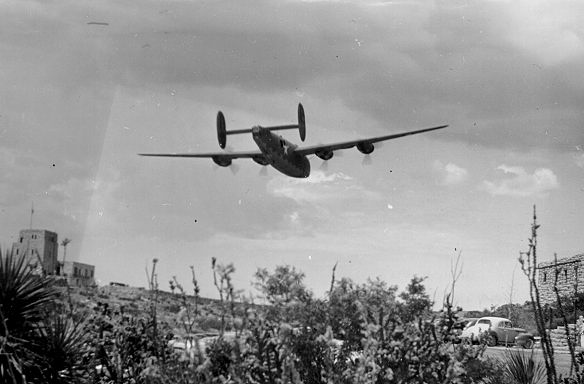Bat Bombs at Carlsbad Caverns National Park

National Park Service
As part of the war buildup, the army built a training base for bombardiers and navigators southwest of the town of Carlsbad in 1942. An auxiliary field at the Carlsbad air base was the site of one of the war’s stranger experiments. A secret government project envisioned cooling captured bats into a sleep-like state, dropping them from an airplane over Japan and relying on their tendency to roost in dark spaces to deliver incendiary bombs to the wooden structures that made up most of Japan’s homes and offices.
In a 1943 test, Army officers collected bats from Carlsbad Caverns (a practice that would never be permitted today). As researchers photographed the sleeping bats before dropping them from an airplane, the warm New Mexico sun revived the animals, who then flew off carrying their weapons and a fifteen-minute fuse. The bats performed splendidly, roosting in the base air control tower, hangers, offices and barracks buildings. Base personnel, kicked off their field by the project’s secret classification, watched in horror from behind locked gates as most of their facilities went up in flames. Despite the apparent lethal effectiveness of the bat bombs, the project was canceled: it eventually proved impossible for the military to trust bomb delivery to the cave-dwelling fliers.
*this section of the article is an excerpt from Carlsbad Caverns National Park Historic Resources Study
Japanese Incendiary Balloons at Olympic National Park
One final threat to the continental United States from Japan was the launching of some 9,300 incendiary balloons from the northern part of Japan's Honshu Island). Between November 1944 and July 1945, balloons measuring thirty-five feet in diameter were recovered as far east as Michigan, and in Mexico, Canada, Alaska and Hawaii. Drifting across the Pacific by prevailing air currents and carrying from twenty-five to sixty-five pounds of incendiary bombs, the greatest incidences of balloon landings were in the western states of Oregon, Washington, Montana and California. A total of twenty-five balloons, or parts of balloons, landed in Washington. Two were recovered on the Olympic Peninsula—one at Vaughn (Gig Harbor) on February 28, 1945, and the other at Chimacum on March 13, 1945.
As part of a U.S. military countermeasure, the Fourth air force initiated a defensive system known as the "Sunset Project," early in April 1945. In an attempt to detect Japanese balloons as they approached the Washington coast, radar sites were established at Quillayute, Ruby Beach and Queets.
As with other U.S. defense measures undertaken on the Olympic Peninsula, Olympic National Park was involved in operations to sequester the Japanese incendiary balloons. Soon after balloons were first sighted, all Park ranger personnel attended bombing school training at Yosemite or Fort Lewis, to get the latest instruction on how to handle and what to expect from these fire bombs.
Throughout the four years of U.S. involvement in World War II, and especially during the time of military defense activities on the Olympic Peninsula, Olympic National Park cooperated with all the branches of the armed forces in numerous subtle yet significant ways. Within the Coastal Strip and the Queets Corridor, then known as the Olympic acquisition area, the Park Service issued special use permits for coast guard and army use of Becker's Ocean Resort, Ruby Beach Resort, Thunderbird Inn at the Washburn Resort, C. W. Keller's Resort (located in the Coastal Strip), and Kelley's Ranch (on the Queets River). On the boundary of the Park's Morse Creek addition the Park Service issued the army a special use permit for the designation of an "Impact and Hazard Area" in connection with army tank gun target practice. On the coast the Park granted permission for the removal of 130,000 tons of sand from Rialto Beach for use in completing the Quillayute Air Base.
On many occasions during the war personnel from both the military and the Park Service exchanged services on various missions. Olympic National Park personnel instructed groups of military men in firefighting techniques, assisted in airplane rescue work and organized recreational trips into the Park. While men of the 15th Cavalry were stationed at Port Angeles, the Park opened the swimming pool at Olympic Hot Springs for their use. On several occasions the U.S. Coast Guard took Park personnel on flights over the Park for study purposes. Both the navy and coast guard supplied the Park with men to fight forest fire.
*this section of the article is an excerpt from the Olympic National Park Historic Structures Report
Last updated: December 1, 2015
